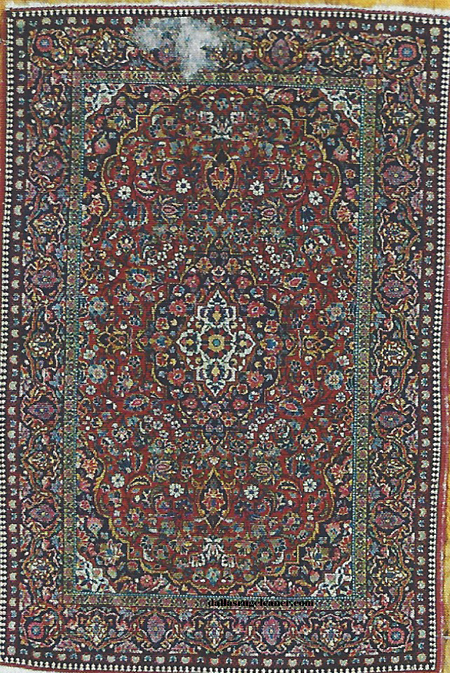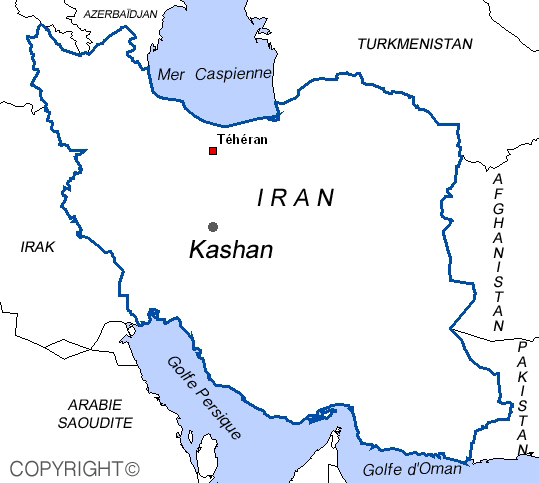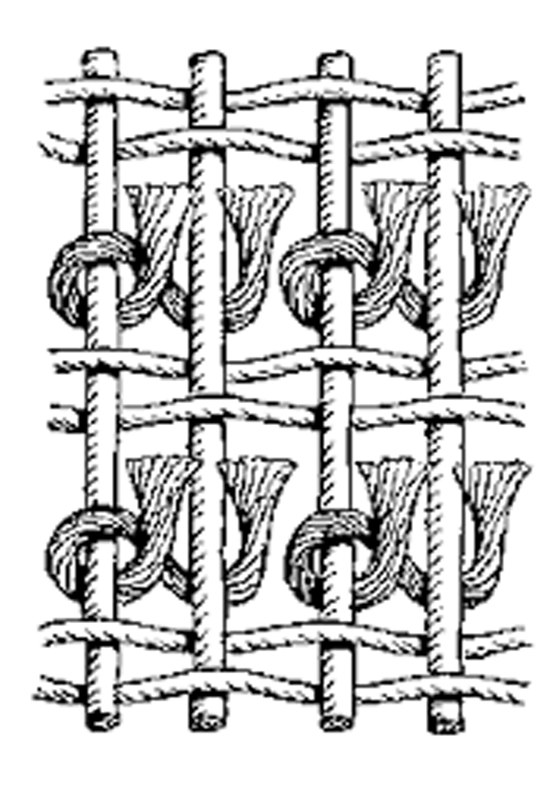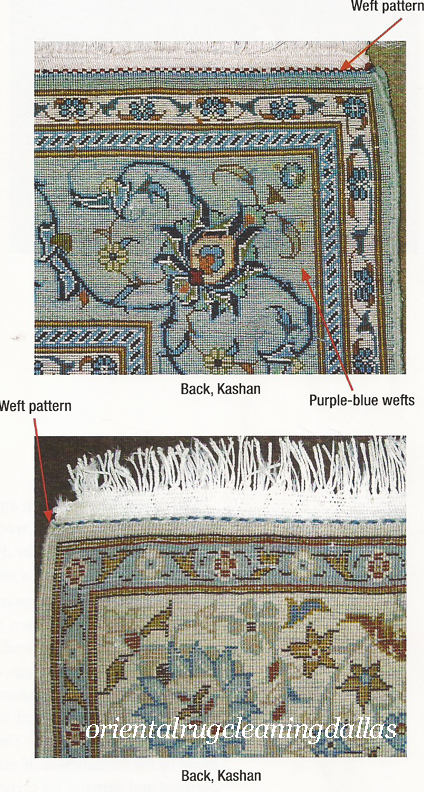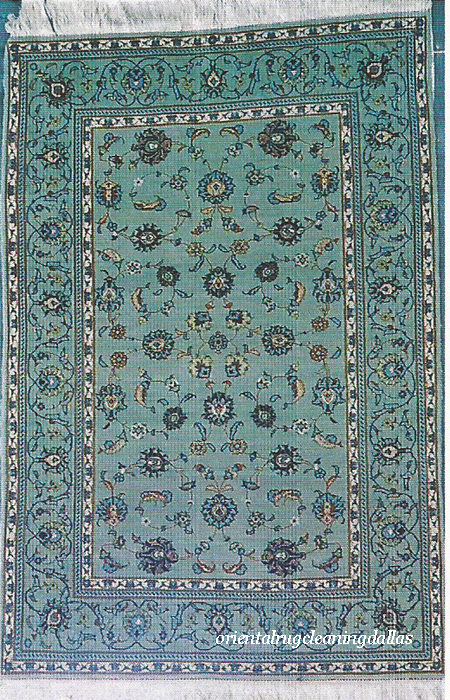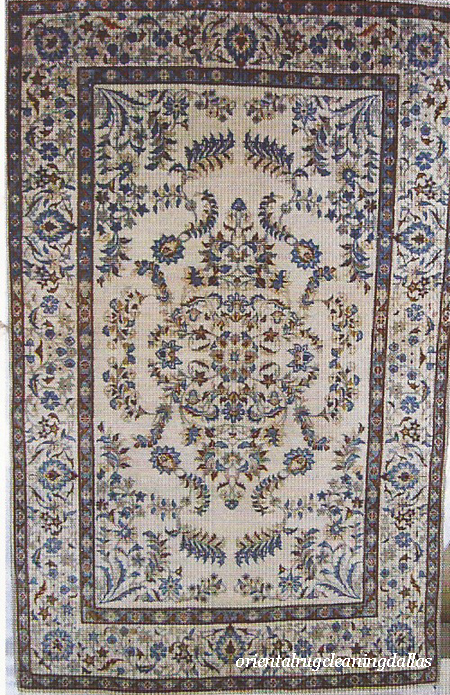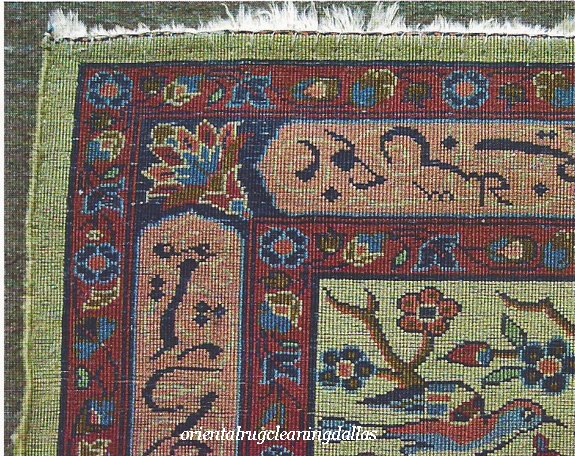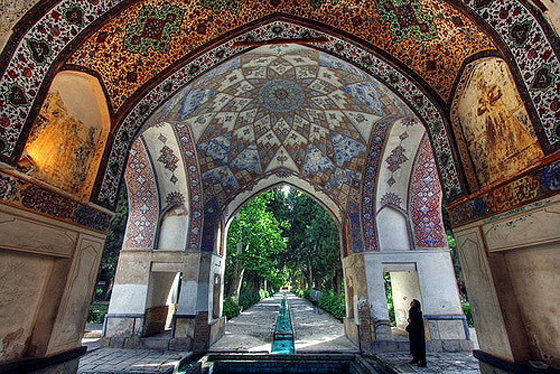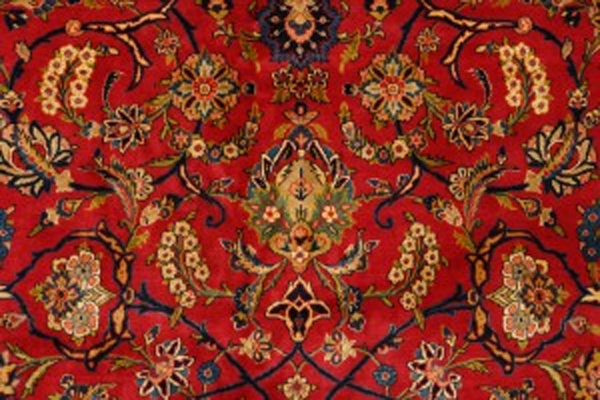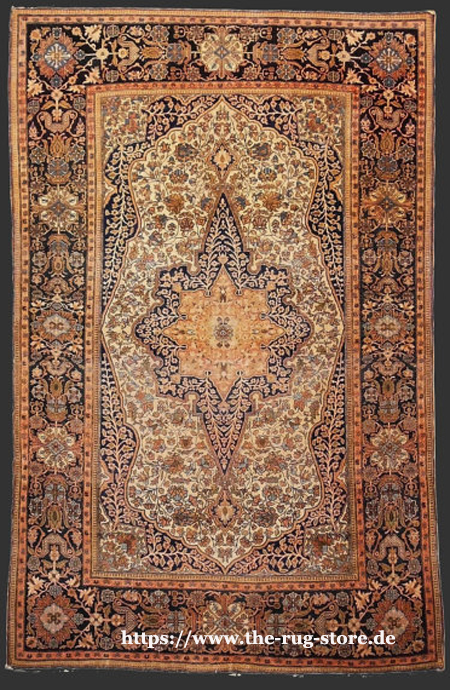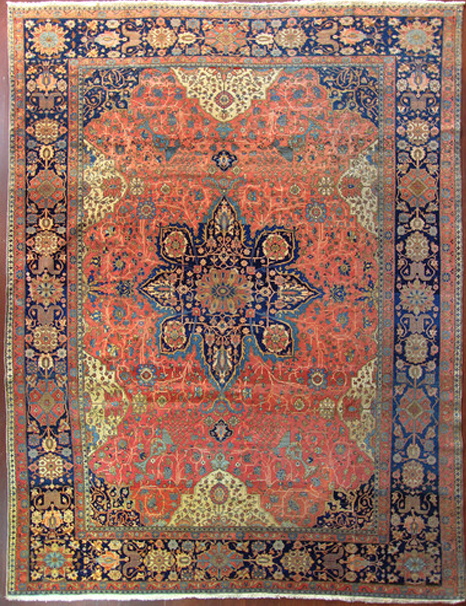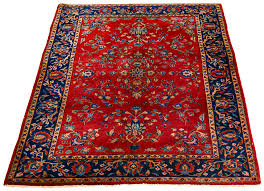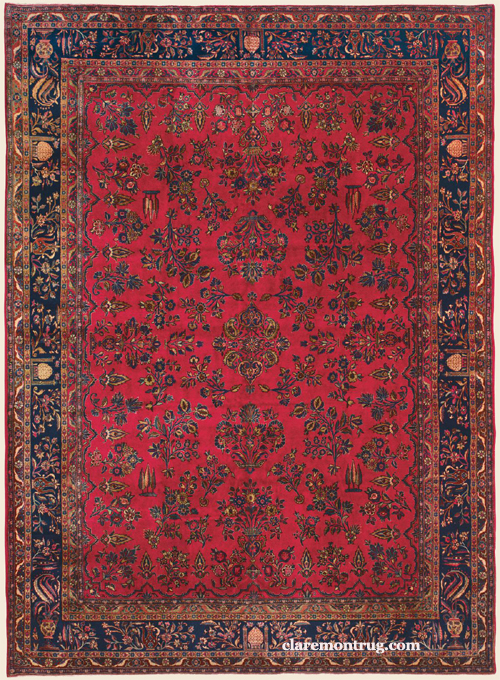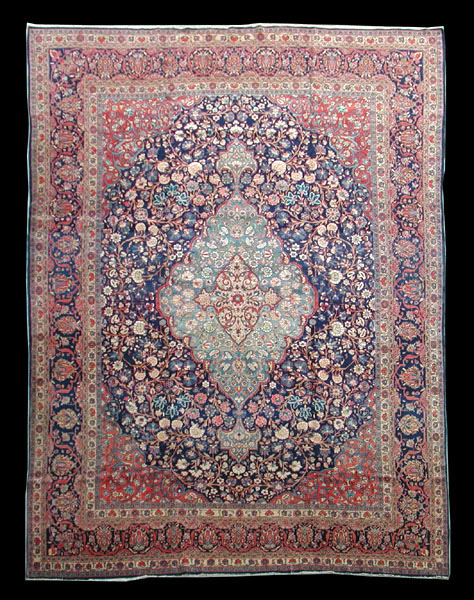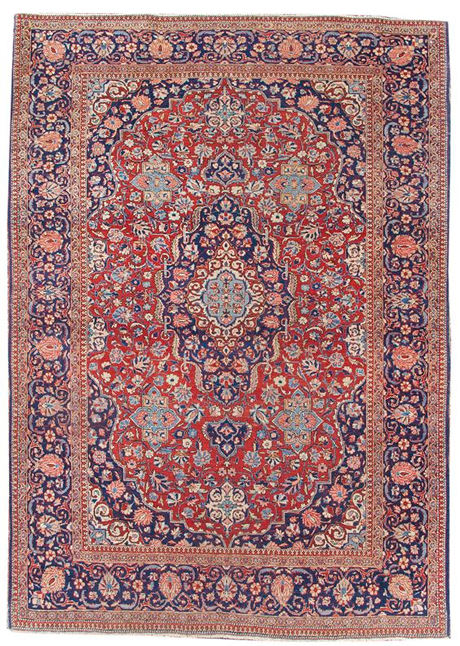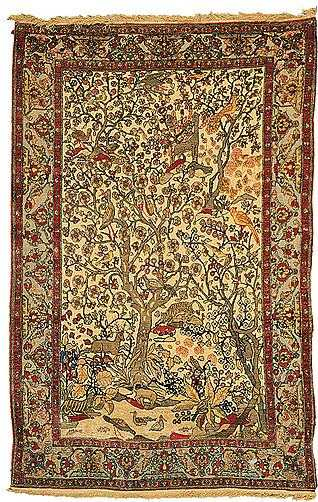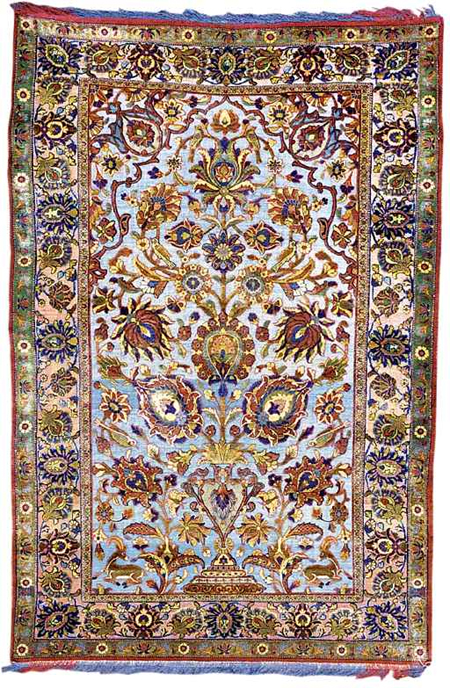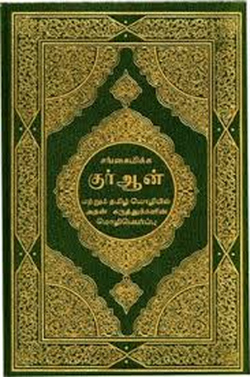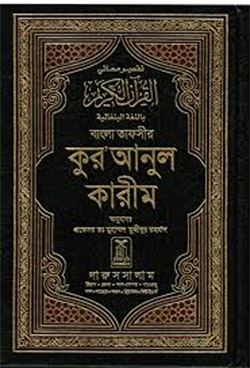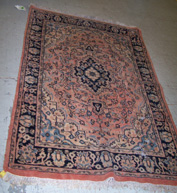KASHAN ORIENTAL RUGS
Kashan oriental rugs are named for the city of Kashan, the capital city of the Isfahan province in north central Iran. Kashan is one of Iran’s oldest cities and was a well-known center of silk production, resulting in some of the finest Persian silk rugs of ancient times.
The most common traditional design of these Kashan oriental rugs is a central medallion with corners on a field that can contain any number of curvilinear floral forms and sprays, vines, and arabesques. The design of Kashan rugs has remained pretty much unchanged for centuries.
It is important to note that the same caveats that apply to all oriental rugs must be repeated:
- The way to accurately identify a handwoven oriental rug is not just from the design, but from the way it is woven, and the materials used.
- Many countries produce rugs with designs that may copy another country’s rug.
Because of the individual nature of hand-woven rugs, we can study the most common examples (and there will be variations!) but we must be aware there are many exceptions to every example and the terms ’always’ and ‘never’ do not apply.
CONSTRUCTION OF
KASHAN ORIENTAL RUGS
FOUNDATION
The foundation of Kashan oriental rugs consists of cotton warps (top to bottom cords) and 2 shoots of cotton wefts (side to side cords), usually dyed blue. The first weft is thicker and straight and the second is thinner and sinuous.
KNOT
Kashan oriental rugs use the Persian or Senneh asymmetrical knot. The yarn is placed in a loop around one of the warps (up and down foundation cords) and remains loose under the other. The 2 ends emerge on either side of the warp. The Kashan rugs will open to the left.
ENDS
The ends are usually finished with a cotton kilim (a flat area of varying size woven at the end of the rug before the fringe is finished) combined with a knotted fringe. An alternating red and blue or yellow and blue weft pattern can sometimes be found in the kilim.
SIDES
The sides are finished with a single cord overcast in wool.
PILE
The
pile is composed of tightly woven wool and is usually clipped
relatively short to allow the intricacy of the design to show through.
Although they would be quite rare today, some Kashans are made of silk.
COLORS
The most common colors used in Kashan oriental rugs before 1970 were red and navy blue with the red used for the field and the navy blue for the major border.
From the 1970s until the 1980s, the color palette changed to a pale green/grey field with purple-blue wefts.
Since the 1980s, Kashan oriental rugs have gone back to the traditional colors of red and navy blue.
SIZES
Kashan oriental rugs are made in all sizes.
SIGNATURES or DATES
Although it may or may not be important as far as determining the value of these rugs, signatures and/or dates can sometimes be found woven into the borders. They could be the weaver’s name, the name of the person who commissioned the rug, the area in which the rug was woven, or even the name of the factory that made the rugs.
DRY ROT PROBLEM
Dry rot can be a problem with many tightly woven machine made or hand-knotted rugs, such as Kashans, Sarouks, and machine-made rugs such as Wiltons. Over a long period of time, the cotton foundation yarns can become brittle and break when attacked by fungi in the air. If this should be the case, there will be slits along the sides and interiors of these rugs.
KASHAN HISTORY
Kashan oriental rugs began their history during the Golden Age of Persian Weaving in the 16th and early 17th centuries under the reign of Shah Abbas II. The Shah was a famous patron of the arts and principal monarch of the Safavid Dynasty. It is interesting to note the ‘Royal Garden’ of Kashan (the Garden of Paradise), built by Shah Abbas and still preserved since the 16th Century, was used as the model for most Persian city carpets.
The Shah Abbas Persian design, very common in Kashan oriental rugs, contains a series of curvilinear floral forms, creating a gardenlike background. This design can be found in an all-over format or with a centrally located diamond-shaped medallion.
After the Afghan invasion of 1722, the Safavid dynasty was
conquered and rug production all but ceased. However, Kashan soon
became known as an important center of the garment trade. By the late
19th century the market had shifted back from fine wool cloth to fine
wool rugs and the rug trade was successfully revived.
One of the most prized rugs, dating from the middle of the 19th century (though sometimes earlier) are the antique Mohtasham Kashans. These rugs usually have an antique ivory or gold background, have closely shorn pile and very fine detail. Colors are usually soft pastels and earth tones with a deep midnight indigo blue contrast. These particular rugs often use a subtle form of abrash or intentional variations in the color tones. Other sought after Kashans include the Manchester and Dabir as well as the Souf.
The Manchester Kashans were made around the turn of the century with machine spun wool from Marino sheep. They have a very soft wool pile and are distinguished by their single-wrapped magenta silk selvages.
Most antique Kashan rugs still available today were usually woven from the second half of the 19th to the beginning of the 20th century. They used a superior quality of wool and natural dyes.
After 1950, most Kashan rugs use modern synthetic dyes. Like most Iranian rugs woven today, these dyes are not colorfast, and the colors can run into the fringes during cleaning or if the rug gets wet.
KASHAN DESIGN
Kashan fields contain arabesques and flower-stems, palmettos, rosettes, blossom and leaf motifs in very dense patterns of endless or centralized repeats of floral ornamentation. A central medallion with pendant systems enhanced by corner spandrels and repeating floral motifs complete the design.
It is said the inspiration for the medallion and corner pattern came from the beautiful tooled leather covers used to bind the Koran. The covers themselves were based on the intricate patterns found in the dome of mosques.
KASHAN DESIGNS WOVEN IN OTHER COUNTRIES
During the 16th century, master weavers and dyers were brought to the area of modern-day Pakistan and India and began producing very high quality Kashan design rugs even surpassing some produced in Persia. A main difference between Pakistani and Iranian Kashans have to do with the color tones. Pakistani Kashans usually use pastel shades.
KASHAN ORIENTAL RUGS OF TODAY
Antique Kashans were finely woven and made with excellent materials and natural dyes. Unfortunately, the contemporary Kashan rug does not favorably compare to the fineness and overall quality of the antique rug that shares its name.
"The Cleanest Clean You've Ever Seen."
by
ABC Oriental Rug & Carpet Cleaning Co.
130 Cecil Malone Drive Ithaca, NY 14850
607-272-1566

Give the Gift of ABC CLEAN!
Gift Certificates Make Great Gifts!
Call Today
607-272-1566
or
Stop In to Order
ABC
Carpet & Rug
Spotting Guide
Learn how to remove spots with ordinary household solutions
Sign up below to gain access to your complementary Spotting Guide from ABC.
Registering your email address guarantees you will be notified whenever discount savings coupons become available.

ABC
Carpet & Rug
Spotting Guide
Oriental and Area Rug Washing at ABC Oriental Rug
Rugs on the wash floor are gently scrubbed before thorough rinsing.
Gentle scrubbing continues. Note the wringer in the background-the next step in the washing process after rinsing.
After thorough rinsing, the rug is sent slowly and carefully through the wringer to take out as much of the water as possible before being hung on racks in the drying room.
Rugs are hung on a rack in the temperature controlled drying room until completely dry.
